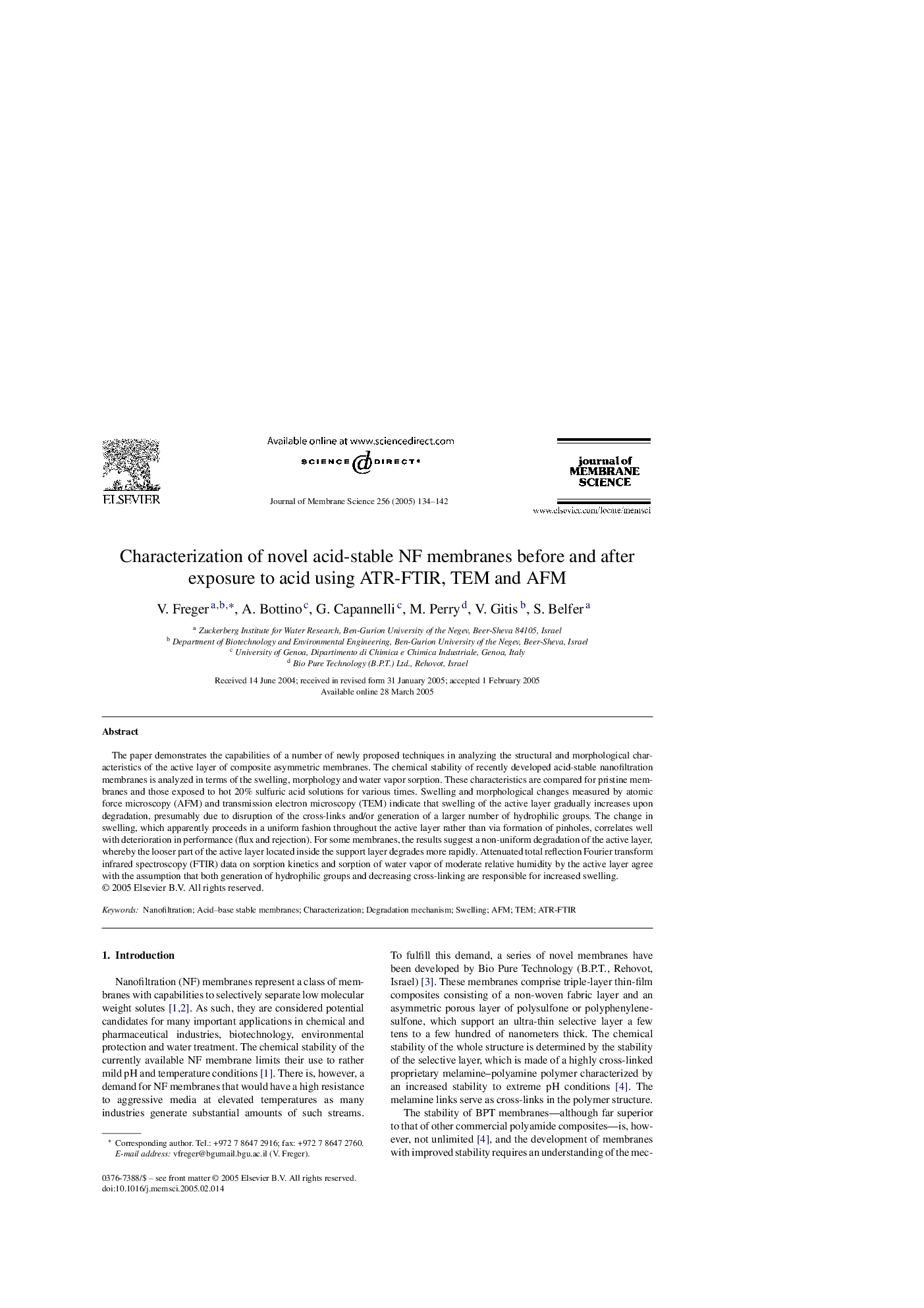| Article ID | Journal | Published Year | Pages | File Type |
|---|---|---|---|---|
| 9684810 | Journal of Membrane Science | 2005 | 9 Pages |
Abstract
The paper demonstrates the capabilities of a number of newly proposed techniques in analyzing the structural and morphological characteristics of the active layer of composite asymmetric membranes. The chemical stability of recently developed acid-stable nanofiltration membranes is analyzed in terms of the swelling, morphology and water vapor sorption. These characteristics are compared for pristine membranes and those exposed to hot 20% sulfuric acid solutions for various times. Swelling and morphological changes measured by atomic force microscopy (AFM) and transmission electron microscopy (TEM) indicate that swelling of the active layer gradually increases upon degradation, presumably due to disruption of the cross-links and/or generation of a larger number of hydrophilic groups. The change in swelling, which apparently proceeds in a uniform fashion throughout the active layer rather than via formation of pinholes, correlates well with deterioration in performance (flux and rejection). For some membranes, the results suggest a non-uniform degradation of the active layer, whereby the looser part of the active layer located inside the support layer degrades more rapidly. Attenuated total reflection Fourier transform infrared spectroscopy (FTIR) data on sorption kinetics and sorption of water vapor of moderate relative humidity by the active layer agree with the assumption that both generation of hydrophilic groups and decreasing cross-linking are responsible for increased swelling.
Related Topics
Physical Sciences and Engineering
Chemical Engineering
Filtration and Separation
Authors
V. Freger, A. Bottino, G. Capannelli, M. Perry, V. Gitis, S. Belfer,
